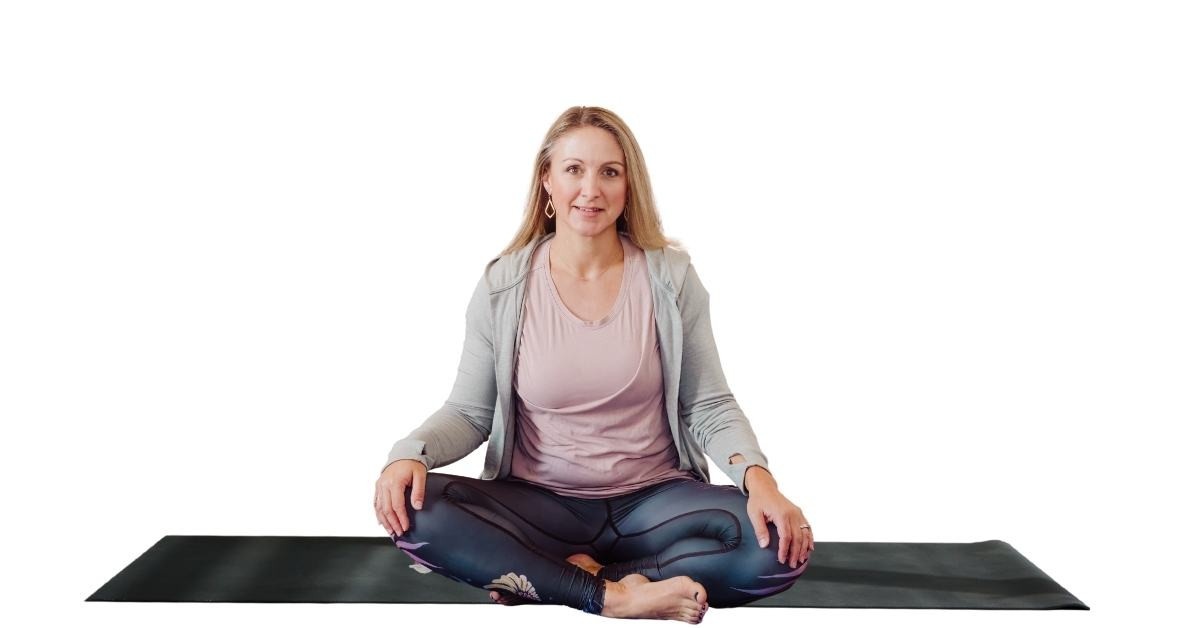In the Bay Area at Cielo House for Eating Disorders where I teach yoga on Saturday mornings, you can see and hear the ocean waves from the yoga room.
But despite the ocean waves, clients struggle to slow down and relax.
- Many clients say yoga is actually stressful because their thoughts start racing.
- Many also feel uncomfortable in their body and report traditional yin poses make them feel even worse!
Instead of enjoying yoga, clients are miserable! I found this out the hard way when I first began teaching.
I thought the normal, gentle, yin classes would be perfect. But instead, all I heard was that clients were struggling.
Fortunately I’ve learned a few interesting lessons since then and nowadays the students in my yoga classes say they appreciate the class.
In this article I’m going to share the most important things I’ve learned, so keep reading!
“Challenge” clients to slow down
Clients with eating disorders have a deeply ingrained tendency to push themselves.
When I first taught yin yoga for eating disorders, I would say the normal phrases like:
- Gently bring your mind back to the present moment
- Let go of judgment, try not to make comparisons
- If you notice tension in your body, just notice it, breathe with it
While I still say similar things in my classes today, I’ve made one distinct change.
I emphasize the “challenge” of slowing down.
I tell them going slow is hard, difficult and requires tons of willpower to slow down.
By framing slowing down as a willpower challenge, clients get more excited and engaged. You can tell they really are trying to slow down!
Now be sure you model going slow, and give them specific cues to slow down.
For example, in your typical cat-cow sequence I’ll ask them to take 5 full seconds for one exhale as they press their shoulders up and tuck their chin inwards.
So I’ll give them specific timing cues to slow them down, and meanwhile I also move my own body from front of the class very slowly as well.
I also breathe very loudly so they can hear the 5 second exhale.
Share yama / niyama philosophy
The second half of class is when I switch away from slow movement like cat-cow to more traditional yin poses like Supta Baddha Konasana.
In the beginning of teaching yoga for eating disorders I would instruct clients to relax in silence, connect with the body stretching, and listen to the gentle yoga music playing in the background.
However, with experience I have come to understand how too much silence is really difficult for clients.
I could tell after a few minutes of silence that clients would start to fidget, but I didn’t know how else to pass the time.
The fidgeting got worse so I really wanted to find a way to entertain them!
Then one day during the second half of class when poses are held longer, I decided to play a TED talk about yoga.
At first I didn’t think the TED talk was effective. The clients didn’t seem to be particularly engaged.
But then something surprising happened. After class, I heard one student ask another, “what did she say again about ahimsa?”
The clients were engaged, listening and most importantly talking to one another about what they learned!
Final thoughts
Try out these tips for yourself!
Frame going slow as a challenge. Be sure to give specific cues and model going slow.
Then when you really slow things down for yin, play some podcasts about the philosophy of yoga.
Got any questions? Be sure to leave a comment down below!
Jared Levenson is the coach and writer behind Eating Enlightenment, a 4 year old blog focusing on intuitive eating. Jared lived for 13 months in a Zen Buddhist monastery and is a certified yoga instructor.



